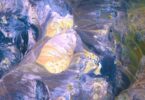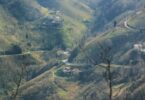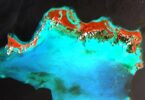In the world of astrophotography, mastering the art goes beyond pointing a camera at the night sky. It requires a critical understanding of key techniques, equipment, and concepts to capture stunning images of the cosmos. This article provides a comprehensive introduction to astrophotography, breaking down essential elements for beginners to get started on their journey to capturing the beauty of the universe through their lenses.
1. Understanding the Intricate Art of Astrophotography: An Overview
Astrophotography is a complex and intricate art that requires a deep understanding of both photography and astronomy. It involves capturing stunning images of celestial objects such as stars, planets, galaxies, and nebulae. To excel in this field, one must possess a blend of technical skills, creativity, and patience.
In this overview, we will delve into the basics of astrophotography, exploring the key concepts and techniques that photographers must master. From understanding the celestial objects in the night sky to learning how to set up and operate specialized equipment, there is much to uncover in this fascinating discipline. Remember, astrophotography is not just about taking pictures; it’s about telling a story through the lens of the cosmos.
So, whether you’re a beginner looking to dip your toes into the world of astrophotography or an experienced photographer seeking to enhance your skills, buckle up for an exciting journey through the stars. With dedication and practice, you’ll soon be capturing breathtaking images of the universe like never before.
2. The Essential Equipment: Choosing the Right Gear for Stellar Photography
When delving into the realm of astrophotography, selecting the right equipment is paramount to capturing stunning images of the night sky. Whether you’re a novice or seasoned photographer, having the appropriate gear can make all the difference in your results.
To embark on your astrophotography journey, consider investing in a sturdy tripod to steady your camera for long exposure shots. A wide-angle lens with a low aperture is essential for capturing the vastness of the night sky, allowing you to showcase the beauty of celestial objects. Additionally, a remote shutter release will prevent camera shake and ensure crisp, clear images.
In addition to basic equipment, specialized tools such as a star tracker can help you capture detailed shots of the stars without the risk of blurring. Investing in a quality camera with high ISO capabilities will also allow you to capture the faintest of stars and nebulae. By carefully selecting your gear, you can elevate your astrophotography skills and capture the wonders of the universe with precision and clarity.
3. Decoding the Night Sky: Mastering the Techniques of Astrophotography
Astrophotography is a fascinating art that allows us to capture the beauty of the night sky in all its glory. Mastering the techniques of astrophotography involves understanding the intricate details of celestial objects and learning how to effectively capture them through the lens of a camera. It is essential to have a solid grasp of the technical aspects such as exposure settings, focus, and composition to truly excel in this field.
One key technique in mastering astrophotography is understanding the movement of the stars in the night sky. Utilizing techniques such as long exposure photography and tracking mounts can help capture stunning images of star trails and other celestial phenomena. Additionally, learning how to effectively process and edit your images in post-production can enhance the beauty of your photographs and bring out the details of the heavenly bodies you’ve captured.
In conclusion, mastering the techniques of astrophotography requires dedication, patience, and a keen eye for detail. By honing your skills and knowledge in this art form, you can truly capture the breathtaking beauty of the night sky for all to see.
4. A Beginners Guide to Post-Production in Astrophotography: Enhancing Heavenly Bodies
In the world of astrophotography, post-production plays a crucial role in enhancing the beauty of celestial bodies captured through the lens. Once you have taken those awe-inspiring shots of the night sky, it’s time to dive into the realm of editing to bring out the full potential of your images. From adjusting exposure and contrast to enhancing colors and reducing noise, post-processing allows you to create stunning visuals that truly stand out.
Here are some beginner-friendly tips for post-production in astrophotography:
- Use software like Adobe Photoshop or Lightroom to fine-tune your images
- Experiment with different adjustment tools to achieve the desired look
- Don’t be afraid to play around with settings and filters to enhance the details of heavenly bodies
By mastering the art of post-production, you can take your astrophotography skills to the next level and create captivating images that leave a lasting impression.
5. Expert Tips and Tricks: How to Excel in Your Astrophotography Journey
When it comes to excelling in your astrophotography journey, there are several expert tips and tricks that can take your skills to the next level. One essential piece of advice is to always research and plan ahead before heading out to shoot. Knowing the locations, weather conditions, and timing of celestial events can make a huge difference in the quality of your photos. Additionally, investing in high-quality equipment such as a sturdy tripod, a telephoto lens, and a star tracker can significantly enhance the sharpness and clarity of your images.
Another important tip is to experiment with different camera settings and exposure times to capture the beauty of the night sky. Adjusting the ISO, aperture, and shutter speed can help you create stunning images with vibrant colors and fine details. Furthermore, don’t be afraid to get creative with your compositions – try incorporating foreground elements like trees or buildings to add depth and interest to your photos. With practice and patience, you can truly excel in the art of astrophotography and capture breathtaking images of the cosmos.
The Conclusion
In conclusion, mastering the art of astrophotography requires not only technical skill but also a keen eye for composition and creative vision. By understanding the basics of astronomy, photography techniques, and post-processing, one can capture stunning and mesmerizing images of the cosmos. While it may seem intimidating at first, with practice and dedication, anyone can delve into the world of astrophotography and create truly breathtaking works of art.
References/Sources:
- “The Astrophotography Manual” by Chris Woodhouse
- “Night Sky Photography: From First Principles to Professional Results” by Michael Covington
- “The Art of Astrophotography” by Carl Koppelmann
- “Practical Astrophotography” by Allan Hall
- “The Photographer’s Guide to Astrophotography” by Jerry Lodriguss.








Leave a Comment